
Learning about kaitiakitanga with kina.
A series of fun-filled Seaweek-themed Enviroschools Encounter events were held around the Northland region. Seaweek – Kaupapa Moana is New Zealand’s annual national week celebrating the sea and runs from March 5 to 13. Seaweek is coordinated nationally by Sir Peter Blake Marine Education and Recreation Centre (MERC)
The free encounters for Year 4 to Year 8 students ran from 9am to 3pm and took place in Kaipara at Pahi Hall and boat club on Wednesday 22nd March, Whangarei’s Hihiaua Cultural Centre on Friday 24th March and the Taipa Beach Resort and Ngāti Kahu whenua on Friday 28th April.
“We will clean our boats away from the water ways to protect marine life,” said one student. “We noticed it is very easy to row on a kayak, but it is hard to row on a rowboat,” said another.
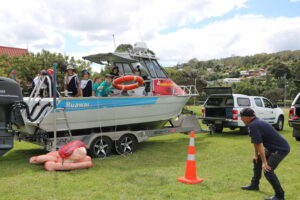
Carrying out a “man overboard” drill. “We found out what it feels like to be rescued (from sea)” – comment from a participant.
The early childhood encounters were held on the same dates and locations rotating over hour long sessions.
The encounters were organised so that children could explore te moana, with the Yr 4-8 students learning how to be safe when diving, biscuiting or fishing, finding out how pests affect the marine food web and learning about Māori traditional knowledge and techniques for sourcing kaimoana.
“We discovered that marine pests spread throughout the country in many different ways,” – said one participant.
Activities for the younger participants included playing a fishing game, pretending to save a shorebird by trapping a rat, hunting for rubbish on the seashore and enjoying face painting with a te moana theme.
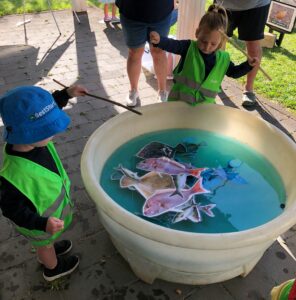
1 fish 2 fish…
Enviroschools and Northland Regional Council were supported by Moana Futures a local organisation that believes sharing experiences with each other and strengthening our connection with the marine environment helps us understand who we are and our responsibilities to ourselves and our surroundings.
“Thank you for your integral part in the Pahi and Whangārei Te Moana Enviroschools events. Your collective energy, expertise, patience and enthusiasm was greatly appreciated.” – Susan Karels, Regional Coordinator Enviroschools Te Taitokerau
Together, over the first two events the team:
- engaged with 280 tamariki, plus their kaiako and accompanying whanau
- expanded minds through hands-on experiences
- spring-loaded future teaching and learning
- honoured our marine environment.
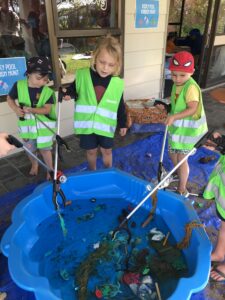
Learning about the marine ecosystem.
“The activity I enjoyed most was learning how to measure – and eating – kina and crayfish,” – student feedback.
The final of these encounters was rescheduled and held on the 28th April in Taipa.
121 participants braved the weather at Taipa to hear from energetic experts exerting energy and passing onto the next generation their knowledge and skills!
Taipa Te Moana feedback:
- “We will make sure we only take the limit, or under, when getting kaimoana” (Oturu School)
- “(We discovered that) many invasive species arrive in NZ by boat” (Kaingaroa School)
- “Ask questions: Do you have life jackets? What’s the weather? Are you drunk? Do we have communication?” (Oruaiti School)
- “We enjoyed seeing and touching the kina and crayfish. Four of us have never had that experience before” (Harvest Christian School)
- “(We discovered) that fanworms live in their own poo!” (Totara North School)
- “We will have a measurer in our fishing kit for the koura” (Te Puna Aroha)
- “Thank you so much for providing a day aimed at early childhood. It was pitched at just the right level. We really appreciated the lengths you went to, to make the environment safe” (Doubtless Bay Kindergarten)

Kina are part of our marine ecosystem.
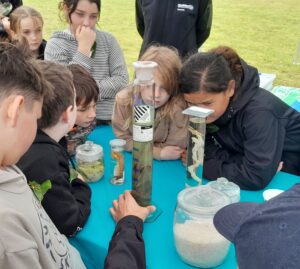
Checking out different marine pests.
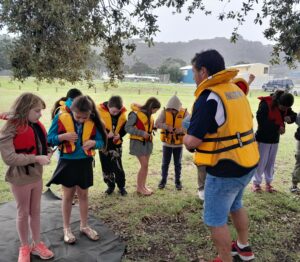
Learning about correct lifejacket wearing.
Banner photo: Enviroschools Facilitator, Jane Norman joins in Moana Futures’ action station about different species of kōura/ saltwater crayfish species and their catch sizes and limits.
